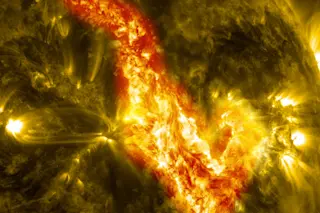If you’re feeling like you could use something new and different to watch to take your mind off the state of the world, consider the sun.
NASA has released a video, embedded below, that shows it in a way you probably have never seen, and maybe never have even imagined.
The video shows an entire decade of activity on the sun in the span of a single episode of, well, name your favorite television series. If you’re anything like me (a proud science visualization geek), and probably even if you’re not, you might find it mesmerizing. (The music helps!)
The video is a time-lapse consisting of one high-resolution photo taken every hour of every day by the Solar Dynamics Observatory between June 2, 2010, and June 1 of this year. It condenses those 10 years into just 61 minutes.
A number of particularly noteworthy solar events that are part of ...














